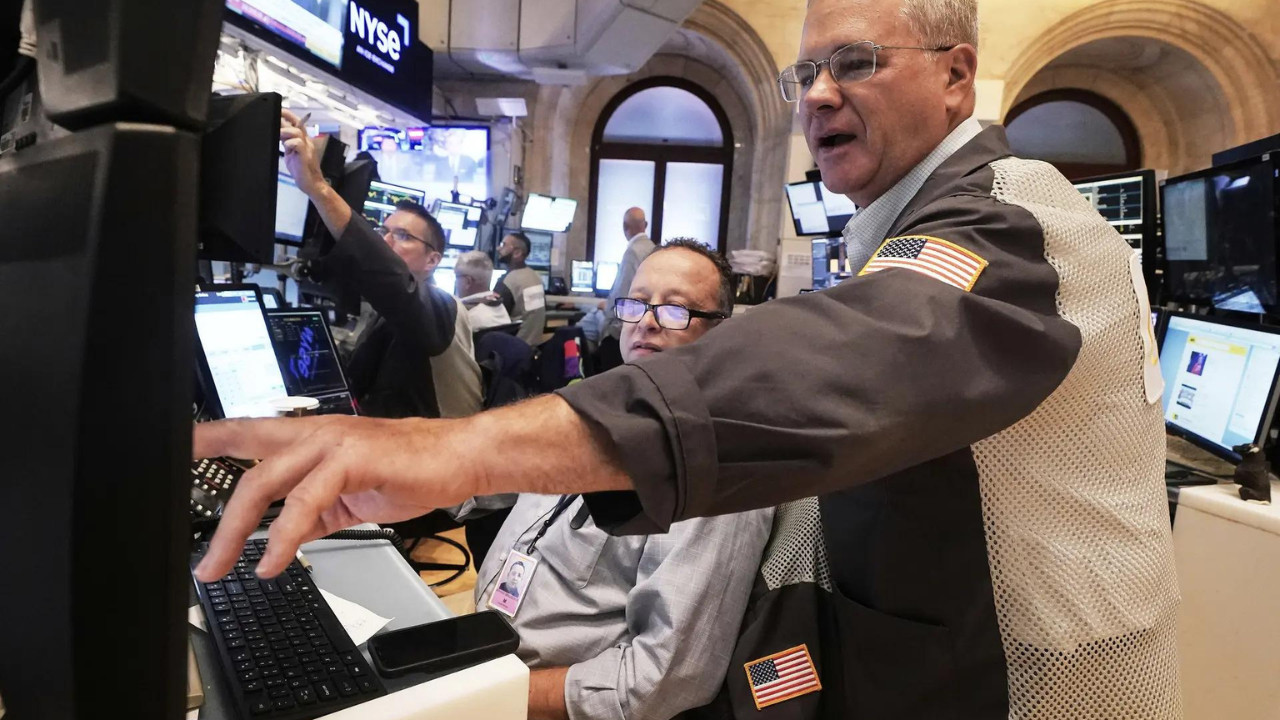Wall Street saw a big jump as Jerome Powell hinted at possible interest rate cuts. The S&P 500 rose, nearing its record high. The Dow Jones also climbed, aiming for a new record. Tech stocks on the Nasdaq also advanced. Small-cap stocks and travel companies saw significant gains. Overseas markets in Germany and Asia also showed positive movement.
Riding the Wall Street Wave: What Powell’s Words Mean for Your Portfolio
Wall Street is a restless beast. It roars one minute, purrs the next, and trying to predict its mood swings can feel like reading tea leaves. Lately, the market’s been particularly sensitive, hanging on every utterance from the Federal Reserve, especially those delivered by Chairman Jerome Powell. So, when Powell took the stage recently at Jackson Hole, Wyoming, the financial world held its breath. But what did he really say, and more importantly, how does it impact you and your investments?
Decoding Powell: A Tightrope Walk on Interest Rates
The annual Jackson Hole Economic Symposium is always a hotbed of speculation, a place where central bankers whisper policy insights (or at least hint at them) and economists dissect every syllable. This year was no different. Powell’s address centered on the Fed’s ongoing battle against inflation. No surprises there. However, the tone was what truly mattered. He reaffirmed the Fed’s commitment to bringing inflation down to its 2% target, even if it means some “pain” for the economy.
Think of it like this: imagine the economy is a car, and inflation is the speedometer needle stuck in the red. Powell, the driver, has his foot hovering over the brake pedal (interest rates). He needs to slow the car down enough to get the needle back where it belongs, but not so hard that he slams on the brakes and causes a pile-up (a recession).
The message was clear: the Fed isn’t ready to declare victory on inflation just yet. And while they acknowledged the progress made, they aren’t planning a victory parade anytime soon. This suggests that further interest rate hikes are still very much on the table, although the pace and magnitude of those hikes remain data-dependent. The Fed is playing it by ear, carefully watching economic indicators to guide their next move. This balanced approach is critical for long-term stock market investing.
The Market’s Reaction: A Hiccup, Not a Heart Attack
Initially, Wall Street responded with a collective shudder. The major indices, including the Dow Jones Industrial Average, the S&P 500, and the Nasdaq Composite, all dipped in the wake of Powell’s speech. It was a knee-jerk reaction to the realization that the “easy money” era might not be returning as quickly as some had hoped. Rising interest rates tend to make borrowing more expensive for companies, potentially impacting their earnings and, consequently, their stock prices.
The market reaction doesn’t signal a complete collapse. It’s more of a recalibration, a reassessment of risk in light of the Fed’s continued hawkish stance. Investors are adjusting their expectations and factoring in the possibility of further rate hikes.
What This Means for Your Portfolio (and Your Sanity)
So, what should you, the average investor, do with this information? First, don’t panic. Resist the urge to make drastic changes to your portfolio based on one speech or one day’s market activity.
Here’s a more practical approach:
* Revisit Your Risk Tolerance: Are you comfortable with the level of risk in your portfolio? Now might be a good time to reassess your risk tolerance and make sure your investments align with your comfort level and long-term goals.
* Diversify, Diversify, Diversify: This is investment 101, but it bears repeating. A well-diversified portfolio is better equipped to weather market storms. Don’t put all your eggs in one basket.
* Consider Long-Term Investments: Focus on long-term investments in companies with solid fundamentals and sustainable growth potential. These businesses are more likely to weather economic headwinds and deliver returns over the long haul.
“`html

“`
* Stay Informed, But Don’t Obsess: Keep an eye on economic news and market trends, but don’t get bogged down in the daily noise. Focus on the big picture and stick to your long-term investment strategy. Staying informed is crucial, but obsessing over every market tick can lead to impulsive decisions and missed opportunities.
* Talk to a Financial Advisor: If you’re feeling overwhelmed or unsure about how to navigate the current market environment, consider consulting with a qualified financial advisor. A professional can help you assess your individual circumstances and develop a personalized investment plan. Looking for guidance? See our related article on selecting the right financial advisor for you.
The Future of the Stock Market: Patience is a Virtue
The road ahead is likely to be bumpy. Inflation remains a persistent challenge, and the Fed’s actions will continue to influence market sentiment. However, remember that investing is a marathon, not a sprint. By staying informed, maintaining a long-term perspective, and diversifying your portfolio, you can navigate the ups and downs of the market and position yourself for success. The key is to remain calm and focused, and trust that a well-thought-out investment strategy will ultimately prevail. The stock market will continue to experience fluctuations, but with a well-thought-out strategy and a focus on the long term, investors can navigate these changes successfully.







